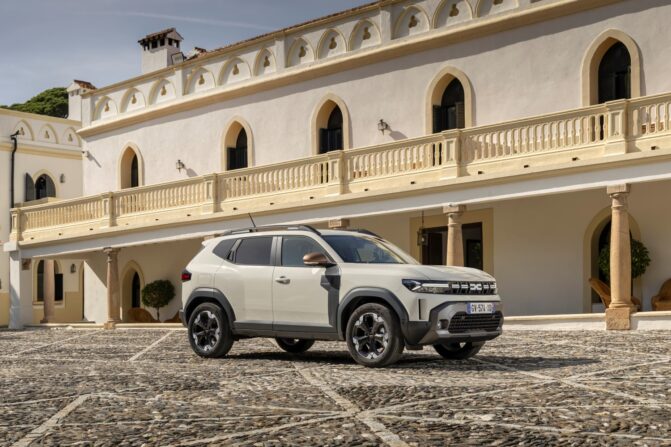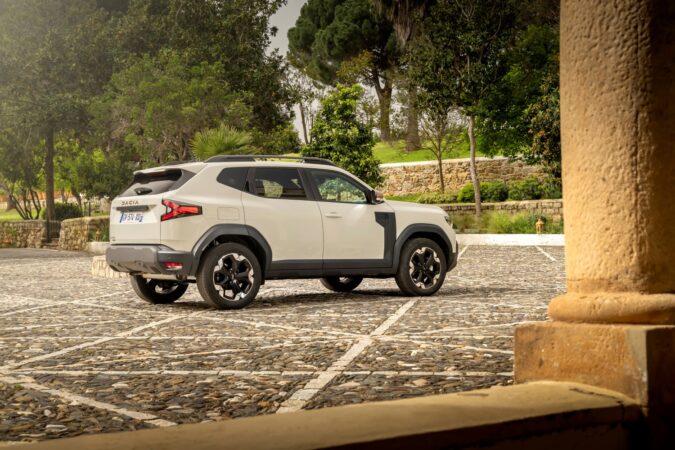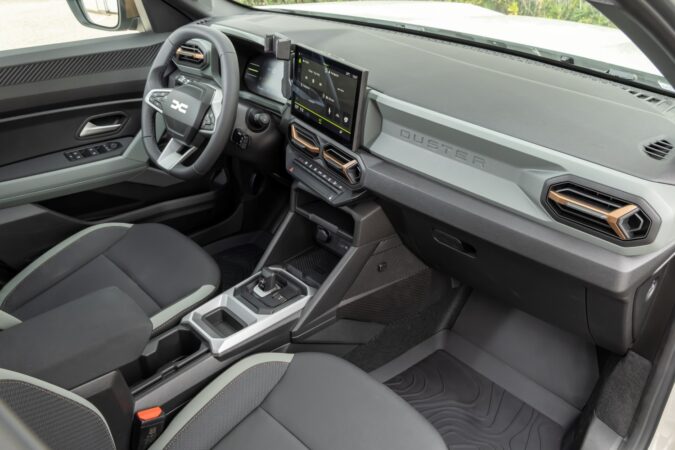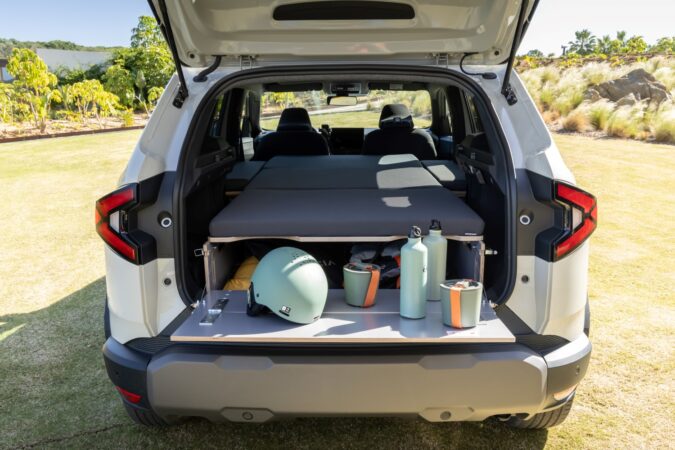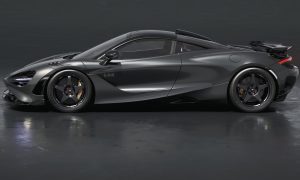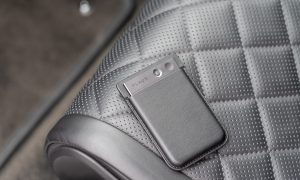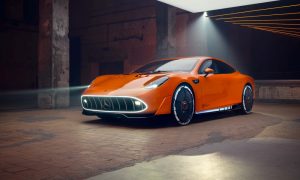Now in its third generation, the ever-dependable, affordable, no-nonsense Dacia Duster brings with it a whole lot of refinement, off-road capability, sustainability, and a shocking amount of luxury for a budget, entry-level, compact SUV. Built atop Dacia’s brand-new CMF-B platform, it technically shares the same underpinning as the new Sandero. But, with a set of high-riding stilts, it offers all-terrain driveability for the 4×4 crowd. Granted, it’s no hardcore off-roader, without a diff locker or low gear ratios, but it’s more than able enough to go off the beaten path.
The new Dacia Duster has special driving modes like Snow, Mud/Sand, and Off-Road, allowing it to better manage torque or power distribution between the front and rear axles. This ought to ensure maximum traction, no matter the terrain you’re driving on. Additionally, this all-new Dacia Duster has a pretty high ground clearance of 217mm; the highest among compact SUVs on the market. And, to further aid in overcoming hard obstacles, it has a high approach angle of 31° at the front, and an equally high departure angle of 36°, with a 24° ramp-over angle.
Way More Off-Road Capable Than Before
I’m also surprised that, for a relatively affordable off-roader, this new Dacia Duster comes with a Hill Descent Control system, as well as off-road-ready readouts. In the 10.1-inch infotainment system, you’ll find data on lateral tilt angles, uphill/downhill pitch, and even a readout just for the torque distribution between the front and rear axles (if you opt for the 4×4 trim). Speaking of, regardless of whether you opt for 4×2 or 4×4, this new Dacia Duster can be had with three different hybridised powertrains, including the all-new, top-of-the-line HYBRID 140.
Combining a 1.6-litre inline-4 and two electric motors (one for power, while the other works as a starter-generator), as well as an automatic transmission, the HYBRID 140 powertrain can run purely as an all-electric vehicle for 80% of the time. It’s a fitting engine for this 3rd-gen Duster, given its focus on sustainability. Much of the interior and exterior plastics, trim, and upholstery adopts a new material called Starkle, which contains 20% recycled materials. Even the Duster’s front and rear skid plates are dyed when the plastic is injected, skipping paint altogether.
Mild Hybrid Or Full Hybrid… You Choose
Aside from the HYBRID 140 engine, you can opt for the TCe 130 powerplant; a completely new powertrain for Dacia. It pairs a 1.2-litre 3-cylinder petrol engine with a 48V mild-hybrid motor, aiding in reducing your average CO2 emissions by roughly 10%. And best of all, you can even get it with a 6-speed manual gearbox! Meanwhile, Dacia is among the few carmakers in Europe to offer ICE and LPG-powered powertrains. The TCe 100 Bi-Fuel engine for the new Duster, when both petrol and LPG tanks are filled (100 litres in all), you could drive as far as 1,400 km.
But, no matter which powerplant you choose, Renault and Dacia’s CMF-B platform brings with it a vast array of improvements. Despite being the same size as the old Duster, this new model offers greater interior space and boot capacity. And, you’ll notice lower NVH, in addition to its sharper dynamics. Not to mention, it’s an overall stiffer chassis, so you’ll experience much less body roll. You even get better visibility! As a whole, it’s an exciting time to be shopping around for a new car, when cheap cars like the new Duster bring this much to the table.

